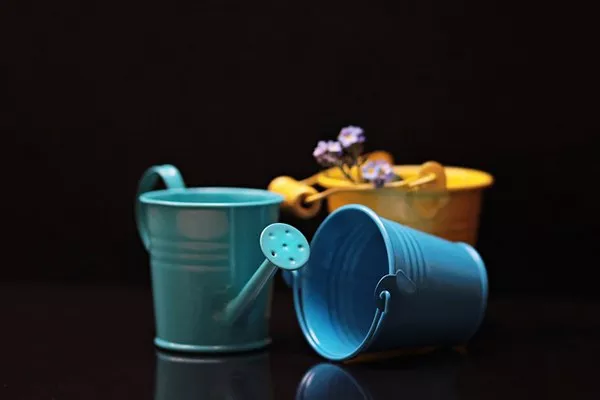Flowers are not only aesthetically pleasing but also play a vital role in the ecosystem by attracting pollinators and providing beauty to our surroundings. However, these delicate blooms are often susceptible to damage from various pests and insects. As gardeners and flower enthusiasts, it’s essential to find safe and effective methods to protect our precious blooms from unwanted visitors.
In this comprehensive guide, we will explore the various options available for keeping bugs off flowers, focusing on safe and environmentally friendly sprays that won’t harm your plants or the ecosystem.
Understanding Flower Pests and Their Impact
Before delving into the solutions, it’s crucial to understand the common pests that target flowers and the damage they can cause. Some of the most common flower pests include aphids, thrips, mites, caterpillars, and beetles. These pests can feed on the leaves, buds, and flowers themselves, causing wilting, discoloration, deformities, and even death to the plant if left unchecked.
In addition to direct damage, flower pests can also transmit diseases and weaken the overall health of the plant, making it more susceptible to other stressors. Therefore, it’s essential to address pest infestations promptly and effectively.
Safe and Effective Bug Repellents for Flowers
When it comes to keeping bugs off flowers, there are several options available, ranging from chemical pesticides to organic and natural remedies. However, with increasing concerns about the environmental impact of conventional pesticides, many gardeners are turning to safer alternatives. Let’s explore some of the most effective bug repellents for flowers:
Neem Oil:
Derived from the seeds of the neem tree (Azadirachta indica), neem oil is a popular organic insecticide and repellent. It works by disrupting the feeding and reproductive cycles of insects, making it an effective deterrent for a wide range of pests, including aphids, mites, and caterpillars. Neem oil is safe to use on most flowers and is readily biodegradable, making it an environmentally friendly option.
Pyrethrin:
Pyrethrin is a natural insecticide derived from chrysanthemum flowers (Chrysanthemum cinerariaefolium). It works by targeting the nervous system of insects, causing paralysis and death. Pyrethrin is highly effective against a variety of flower pests, including aphids, thrips, and beetles, yet it breaks down rapidly in the environment, minimizing its impact on non-target organisms.
Diatomaceous Earth:
Diatomaceous earth is a natural substance made from the fossilized remains of diatoms, a type of algae. It works by mechanically damaging the exoskeletons of insects, leading to dehydration and death. Diatomaceous earth is safe to use around flowers and can effectively control pests such as slugs, snails, and ants without harming beneficial insects or animals.
Garlic Spray:
Garlic spray is a homemade insecticide made by steeping crushed garlic cloves in water and then straining the liquid. Garlic contains compounds that repel insects, making it an effective deterrent for pests like aphids, beetles, and caterpillars. Garlic spray is safe to use on most flowers but should be applied with caution as it can also repel beneficial pollinators such as bees and butterflies.
Soap Spray:
Soap spray is a simple yet effective insecticide made by diluting liquid soap (preferably castile or insecticidal soap) in water. Soap works by suffocating insects and disrupting their cell membranes, leading to their demise. Soap spray is safe to use on most flowers and can control pests like aphids, mites, and whiteflies without leaving harmful residues.
Best Practices for Application
Regardless of which bug repellent you choose, proper application is key to its effectiveness and safety. Here are some best practices to keep in mind when applying insecticides to flowers:
Read and Follow Instructions:
Always read the label instructions carefully before using any insecticide, and follow the recommended dilution rates and application methods.
Timing is Key:
Apply insecticides during the early morning or late evening when pollinators are less active to minimize the risk of harming beneficial insects.
Uniform Coverage:
Ensure thorough coverage of the plant, including the undersides of leaves and the stems, where pests often hide.
Avoid Overuse:
Use insecticides sparingly and only when necessary to prevent the buildup of resistance in pest populations and minimize the risk of environmental contamination.
Monitor Effectiveness:
Regularly monitor your flowers for signs of pest activity and reapply insecticides as needed to maintain control.
Consider Integrated Pest Management (IPM):
Incorporate cultural practices such as proper sanitation, crop rotation, and companion planting to reduce the need for insecticides and promote overall plant health.
By following these best practices, you can effectively protect your flowers from pests while minimizing the impact on the environment and beneficial organisms.
Conclusion
Keeping bugs off flowers is essential for maintaining their health and beauty, but it’s equally important to do so in a safe and environmentally responsible manner. By choosing natural and organic bug repellents and following best practices for application, you can effectively control pests while preserving the integrity of your garden and the ecosystem as a whole.
Remember that a healthy garden is a balanced ecosystem where pests are kept in check by natural predators and the resilience of the plants themselves. By working with nature rather than against it, you can create a thriving garden that brings joy and beauty for years to come.


